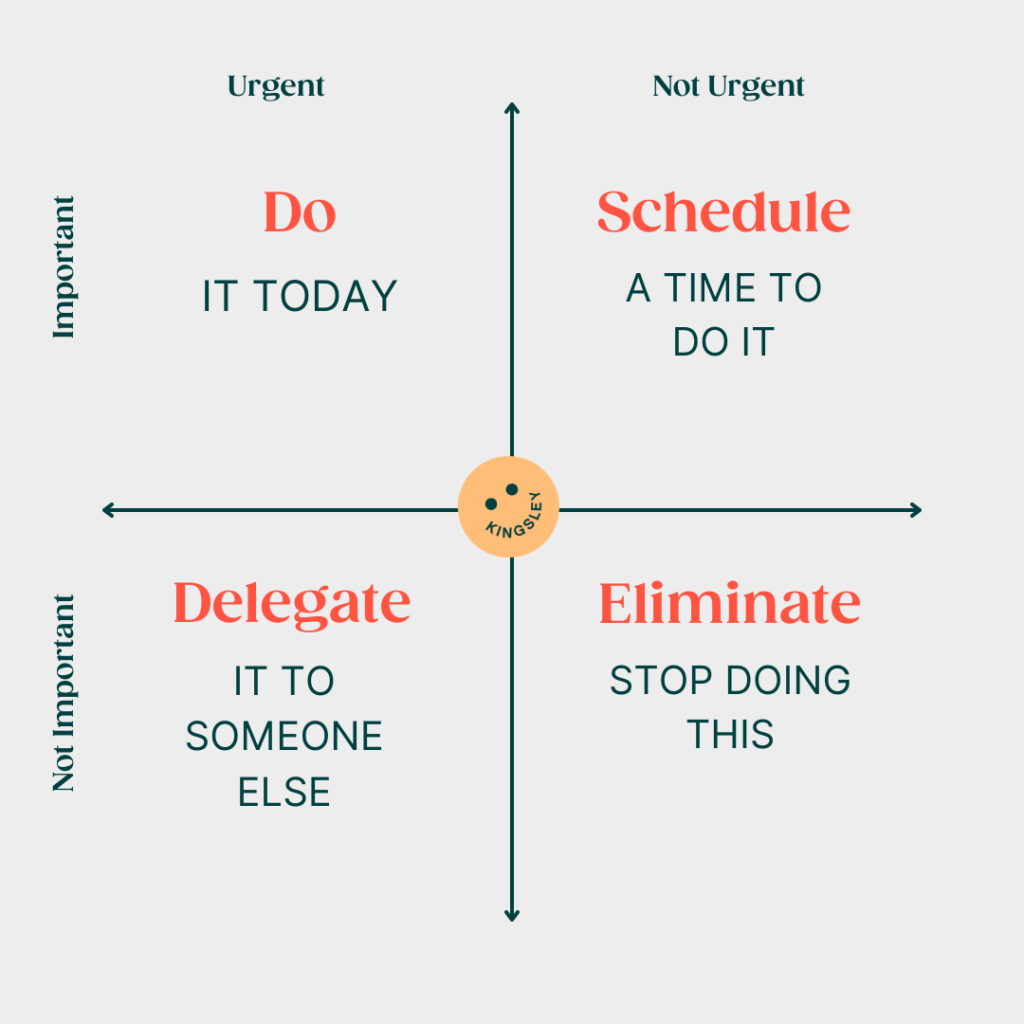What if multitasking was leading you to no tasking
Have you ever started your day with a clear focus on an important task, only to find yourself swamped with interruptions and end up achieving next to nothing by the end of it? You answer an urgent email, a quick call with a colleague pops up, and suddenly you’re helping them with a small request. Then you remember that other thing you needed to do, and by the time you grab a coffee, it’s 5pm and the main task you planned to tackle sits untouched on your to-do list.
This constant task-switching is a common trap we all fall into. Let’s see why multitasking might not be your best friend.
The Multitasking Myth
Our brains, it turns out, aren’t big fans of juggling multiple tasks at once. While you might feel like you’re getting a ton done by checking emails while writing a report, science tells a different story. When we multitask, our brains struggle to fully switch gears between tasks. This “attention residue,” as researchers call it, leaves us with scattered focus and prone to mistakes. Studies have shown that multitasking reduces overall efficiency, making you slower and more error-prone than if you tackled tasks one at a time.
The power of focused work
Imagine this: you sit down to write that report, eliminate distractions (hello, silent mode!), and dedicate your full attention to the task at hand. Sounds simple, right? But this focused approach is a game-changer. When you give your undivided attention to a single task, magic happens. Your concentration deepens, you crank out fewer errors, and your problem-solving skills kick into high gear. Suddenly, that complex report that seemed daunting in the face of multitasking becomes a clear and achievable goal.
The To-Do list monster
Feeling overwhelmed by a never-ending to-do list? You’re not alone. But before you resign yourself to another day of frantic task-switching, let’s equip you with some tools to fight back. Here’s where prioritization comes in. Tools like the Eisenhower Matrix can be your best friend. This handy framework helps you categorize tasks based on urgency and importance, allowing you to identify the high-impact ones that deserve your focused attention.
The Eisenhower matrix
-
Urgent & Important (Do First): These are the mission-critical tasks that demand immediate attention. Think deadlines, emergencies, or anything that could negatively impact your work if not addressed right away.
-
Important, Not Urgent (Schedule): These are the tasks that contribute significantly to your long-term goals but don’t have a pressing deadline. This might include strategic planning, skill development, or relationship building. Schedule dedicated time slots for these important tasks to ensure they don’t get neglected amidst the daily hustle.
-
Urgent, Not Important (Delegate or eliminate): These tasks might feel pressing but don’t contribute much to your overall goals. Consider delegating them to someone else on your team or eliminating them altogether if possible.
-
Not Urgent, Not Important (Eliminate): These are the time-wasters that can be crossed off your list without consequence. Be honest with yourself and eliminate tasks that don’t add value or contribute to your goals.
Using the Eisenhower Matrix
- List your tasks: Start by listing out all the tasks on your to-do list, big or small.
- Categorize each task: Analyze each task and determine its level of urgency (requires immediate attention?) and importance (contributes to your goals?). Using the definitions above, place each task in the appropriate quadrant of the matrix.
- Take action: Now that your tasks are prioritized, take action accordingly:
- Do First: Focus on completing tasks in the “Urgent & Important” quadrant first. Dedicate focused work sessions to tackling these critical activities.
- Schedule: Block out time slots in your calendar for tasks in the “Important, Not Urgent” quadrant. Ensure these important activities don’t get lost in the daily grind.
- Delegate or Eliminate: For tasks in the “Urgent, Not Important” quadrant, see if you can delegate them to a team member or eliminate them altogether if possible.
- Eliminate: Ruthlessly eliminate tasks in the “Not Urgent, Not Important” quadrant. They’re not worth your valuable time and energy.
The Eisenhower Matrix is a simple yet powerful tool that can help you transform your chaotic to-do list into a strategic roadmap for productivity. By prioritizing tasks based on urgency and importance, you can ensure you’re focusing on what truly matters and achieving your goals with laser focus.

Another weapon in your arsenal? Time blocking. Think of it as scheduling focused work sessions for specific tasks. By carving out dedicated time slots and minimizing distractions, you give each task the time and attention it needs to be completed efficiently.
Movement matters, but mindfully
Let’s face it, sometimes we feel the urge to get up and move during the workday. But here’s the thing: constant movement doesn’t necessarily equate to productivity. Instead, consider incorporating mindful movement breaks into your routine. Short walks, stretches, or even a few deep breaths can do wonders for refocusing your mind and refreshing your energy. It’s about working smarter, not just harder.
Break free from the busy trap
Remember, by prioritizing tasks, scheduling focused work sessions, and incorporating mindful movement breaks, you can overcome the “busy trap” and achieve more with a clear and focused mind. Now go forth and conquer your to-do list, one task at a time!
Find more tips on how to get the best efficiency at work in this article.
Don’t forget to follow Kingsley on LinkedIn to discover our latest news.
